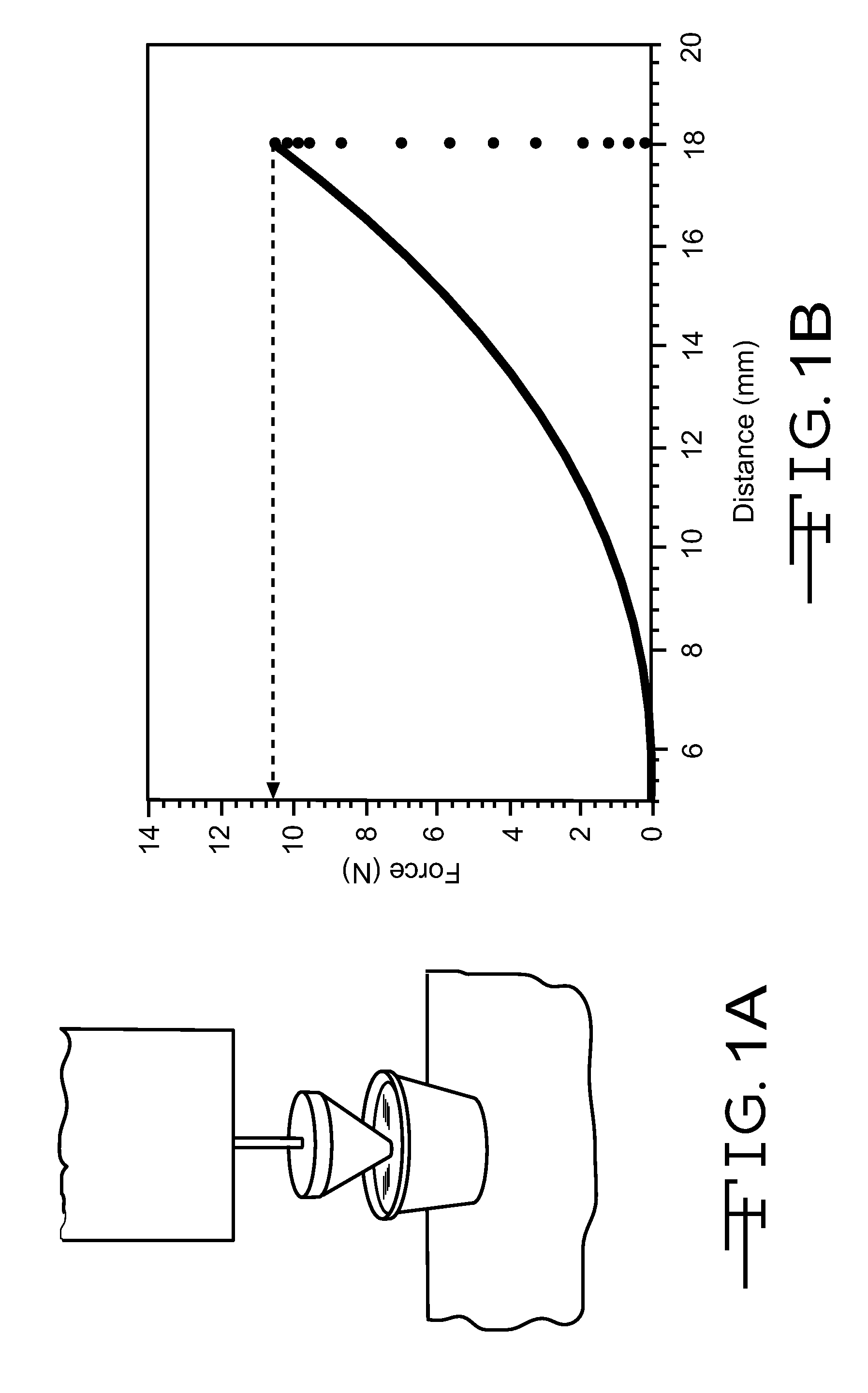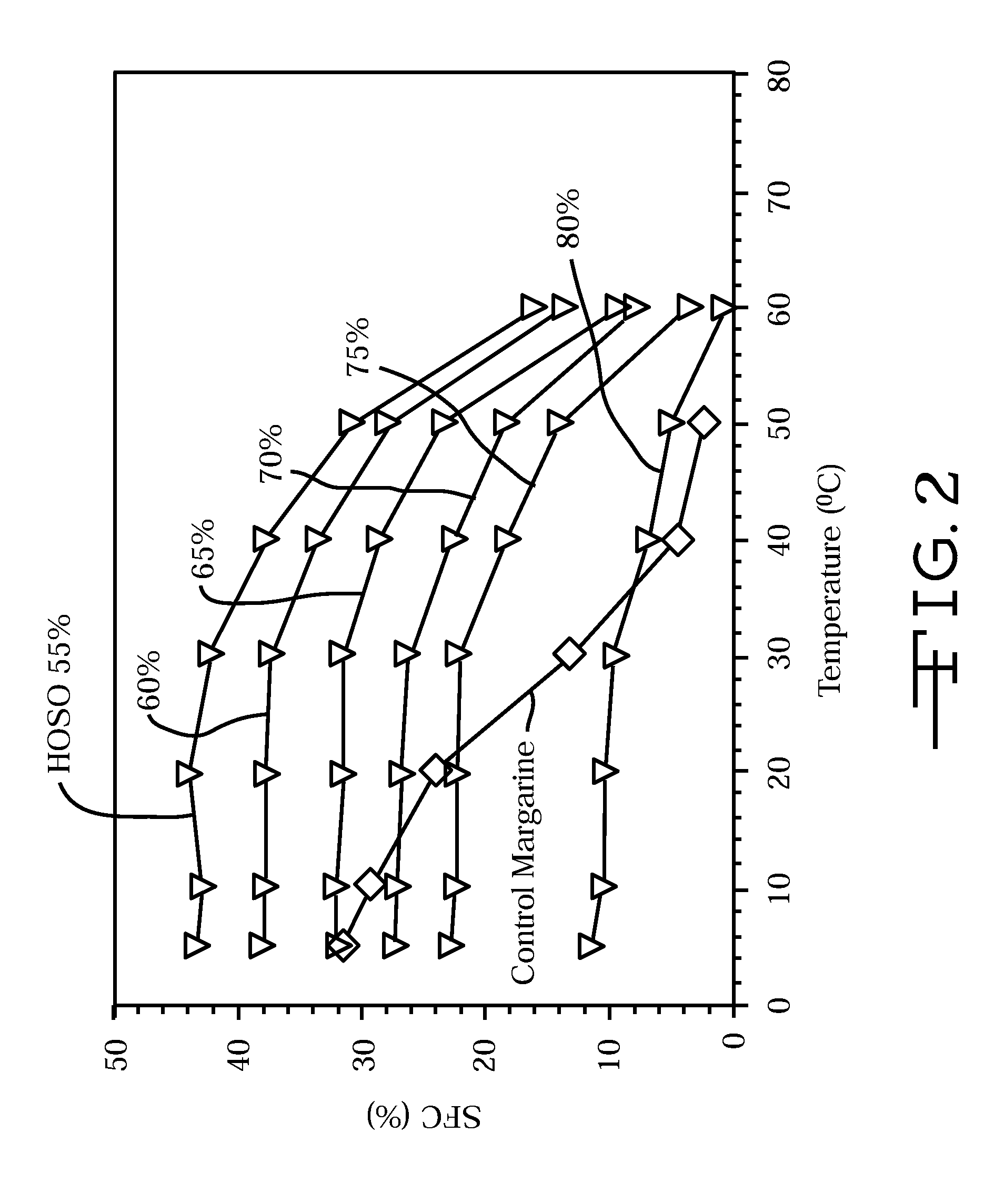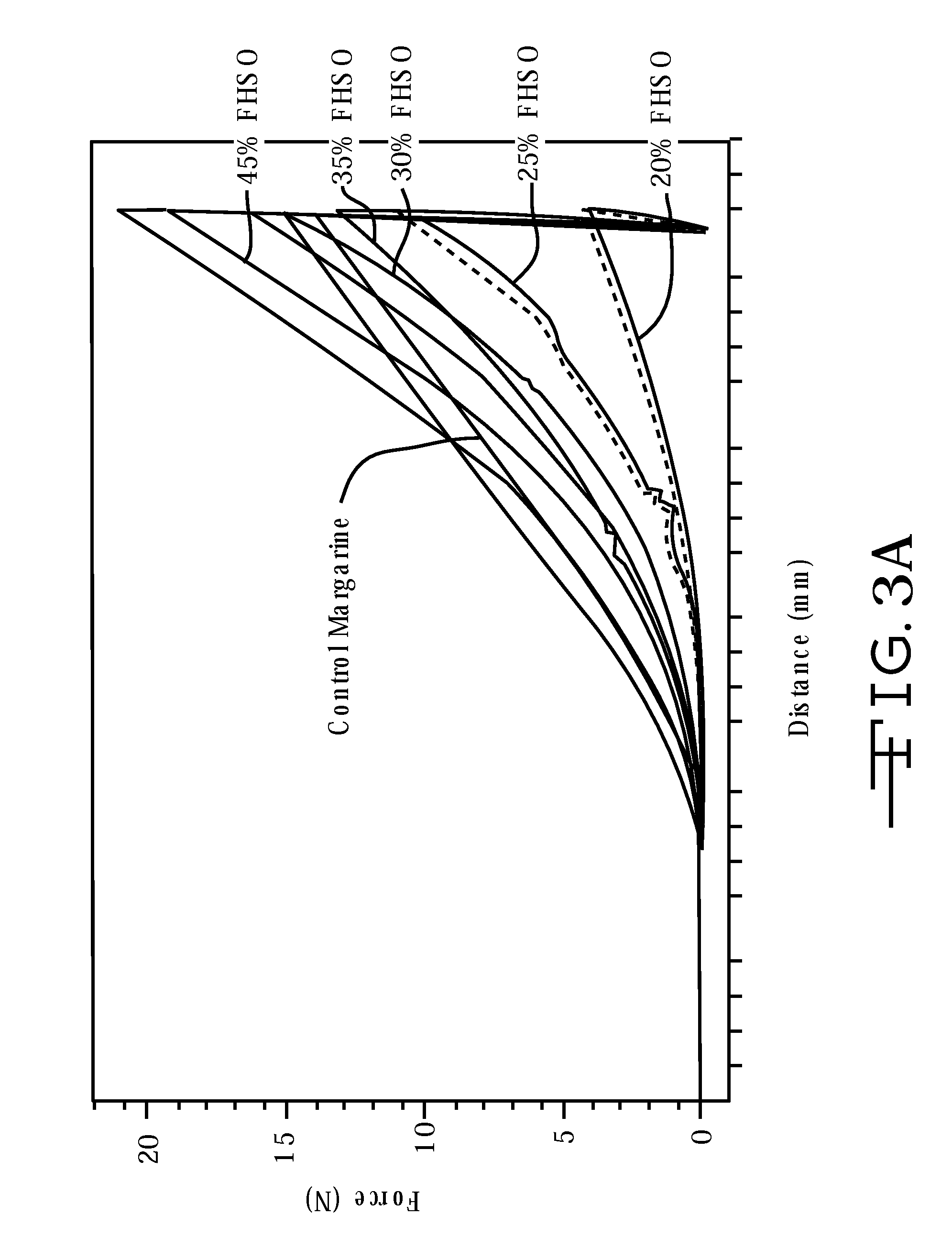Triacylglycerol Based Composition
a triacylglycerol and composition technology, applied in the field of oil and fats, can solve the problems of substantial amount of polyunsaturated fatty acids, difficult to maintain ideal kinetic behavior, and difficult to meet the requirements of fatty acid content,
- Summary
- Abstract
- Description
- Claims
- Application Information
AI Technical Summary
Benefits of technology
Problems solved by technology
Method used
Image
Examples
example 1
Partial Hydrogenation of Plenish®
[0056]2792.91 g Plenish® and 5.26 g of Ni on alumina / silica were charged to a 5 liter stainless steel pressure reactor equipped with a mechanical stirrer, a thermocouple, argon inlet, a hydrogen inlet, and a vent tube. The head space in the reactor was flushed with argon for 10 minutes to rid any oxygen containing air. While the head space was being flushed with argon, the Plenish® was heated to 180° C. while stirring at 350 rpm. Once the Plenish® reaches 180° C. the reactor was pressurized with hydrogen to 200 psi. The IV of the Plenish® was checked regularly during the hydrogenation and the reaction was stopped once the IV reaches between 45-70. The reaction was complete in 1 hour 47 minutes.
example 2
Partial Hydrogenation of Plenish®
[0057]2817.67 g Plenish® and 5.33 g of Pd on carbon were charged to a 5 liter stainless steel pressure reactor equipped with a mechanical stirrer, a thermocouple, argon inlet, a hydrogen inlet, and a vent tube. The head space in the reactor was flushed with argon for 10 minutes to rid any oxygen containing air. While the head space was being flushed with argon, the Plenish® was heated to 180° C. while stirring at 350 rpm. Once the Plenish® reaches 180° C. the reactor was pressurized with hydrogen to 200 psi. The IV of the Plenish® was checked regularly during the hydrogenation and the reaction was stopped once the IV reaches between 45-70. The reaction was complete in 31 minutes.
example 3
Partial Hydrogenation of Plenish®
[0058]150.06 g Plenish® and 0.43 g of Ni on alumina / silica were charged to a 300 milliliter stainless steel pressure reactor equipped with a mechanical stirrer, a thermocouple, argon inlet, a hydrogen inlet, and a vent tube. The head space in the reactor was flushed with argon for 10 minutes to rid any oxygen containing air. While the head space was being flushed with argon, the Plenish® was heated to 160-170° C. while stirring at 350 rpm. After the 10 minutes of headspace flushing was finished, the reactor was pressurized with hydrogen to 88 psi. The pressure was maintained between 66-100 psi during the reaction. The IV of the Plenish® was checked regularly during the hydrogenation and the reaction was stopped once the IV reaches between 45-70. The reaction was complete in 5 hours 20 minutes.
PUM
| Property | Measurement | Unit |
|---|---|---|
| Fraction | aaaaa | aaaaa |
| Fraction | aaaaa | aaaaa |
| Fraction | aaaaa | aaaaa |
Abstract
Description
Claims
Application Information
 Login to View More
Login to View More - R&D Engineer
- R&D Manager
- IP Professional
- Industry Leading Data Capabilities
- Powerful AI technology
- Patent DNA Extraction
Browse by: Latest US Patents, China's latest patents, Technical Efficacy Thesaurus, Application Domain, Technology Topic, Popular Technical Reports.
© 2024 PatSnap. All rights reserved.Legal|Privacy policy|Modern Slavery Act Transparency Statement|Sitemap|About US| Contact US: help@patsnap.com










